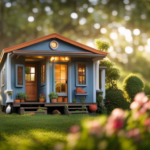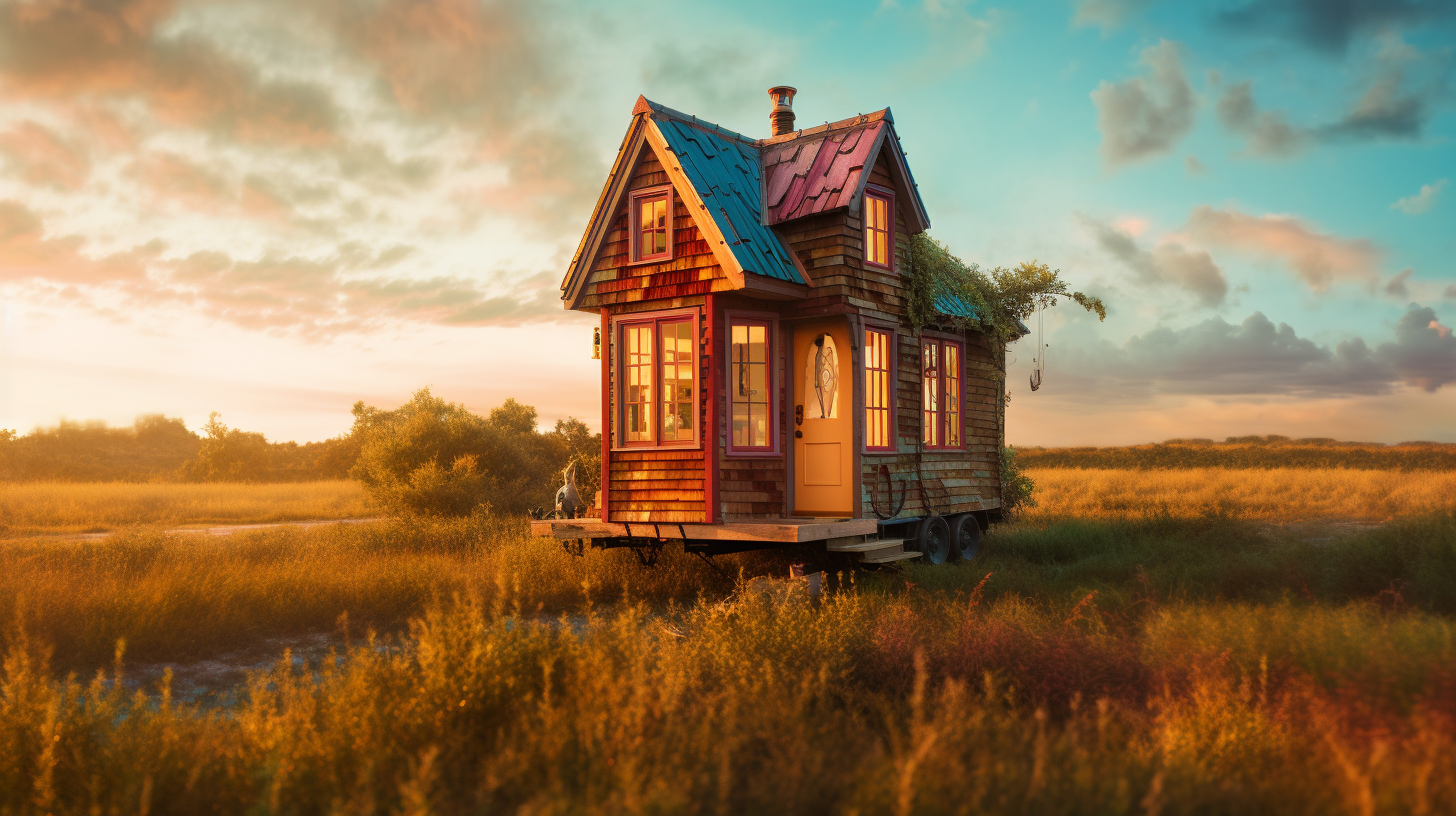Beginners Guides
Highest Rated How To Build A Tiny House Book

Are you prepared to start a transformative journey that turns your living area into a haven of simplicity and allure? Search no more, as I have found the ultimate guide to tiny house building – the top-rated book on constructing a tiny house.
This gem of a resource is a treasure trove of knowledge, guiding you through every step of the construction process with ease and expertise. From understanding the basics of tiny house construction to selecting the right materials, this book leaves no stone unturned.
With its detailed instructions and insightful tips, you will learn how to create a cozy and functional living space that fits your unique needs and style. Armed with essential tools and equipped with the knowledge of successful project management, you will be empowered to bring your tiny house dreams to life.
So, grab a cup of coffee, curl up with this book, and let the journey begin.
Key Takeaways
- Detailed instructions and insightful tips
- Utilizing cost-effective building techniques
- Maximizing space and finding storage solutions
- Selecting sustainable materials like reclaimed wood
Understanding the Basics of Tiny House Construction
Get ready to dive into the nitty-gritty of building your very own tiny house and discover the essential foundations of tiny house construction!
When it comes to constructing a tiny house, understanding the basics is crucial. From navigating tiny house zoning regulations to utilizing cost-effective building techniques, there are several key factors to consider.
Familiarizing yourself with local zoning laws will help ensure that your tiny house is compliant and legal. Additionally, incorporating cost-effective building techniques will enable you to maximize your budget and create a functional living space. From innovative insulation methods to creative storage solutions, there are numerous ways to optimize your tiny house construction.
Now that you have a solid grasp on the basics, let’s move on to planning and designing your tiny living space, where you can truly put your creativity to work.
Planning and Designing Your Tiny Living Space
When it comes to planning and designing my tiny living space, there are a few key points I need to consider. First and foremost, choosing the right layout and floor plan is crucial. I want to make sure that the space is functional and suits my needs.
Additionally, maximizing space and finding storage solutions is essential in a tiny house. I need to think creatively and efficiently to make the most of every square inch.
Choosing the Right Layout and Floor Plan
Visualize yourself walking through the different layout options and envisioning the perfect floor plan that seamlessly combines functionality and charm in your tiny house. It’s an exciting process that requires careful consideration of your needs and preferences.
When choosing the right layout and floor plan, there are a few key factors to keep in mind. First, think about the location of your tiny house and how it will fit into the surrounding environment. Consider views, sunlight, and access to amenities.
Second, take into account your budgeting and financing options to ensure that the chosen layout is within your financial means.
Third, think about the size and flow of each room, considering how you will utilize the space efficiently.
Finally, don’t forget to incorporate your personal style and aesthetic preferences. By carefully considering these factors, you can create a layout and floor plan that perfectly suits your needs and desires.
Now, let’s transition into the next section about maximizing space and storage solutions.
Maximizing Space and Storage Solutions
Now, let’s dive into the world of space-saving techniques and clever storage solutions to make the most out of your tiny house. Maximizing functionality is key when it comes to living in a small space.
One of the best ways to do this is by incorporating space-saving furniture into your design. Look for multi-functional pieces such as sofa beds, folding tables, and wall-mounted storage units. These not only save space but also provide additional functionality.
Another great tip is to utilize vertical space by installing shelves and cabinets that go all the way up to the ceiling. This will help you maximize storage without taking up valuable floor space.
Additionally, consider using storage solutions that can be hidden, such as under-bed storage or built-in cabinets. By implementing these strategies, you can create a tiny house that feels spacious and organized.
Now, let’s transition into the next section about selecting the right materials for your tiny house.
Selecting the Right Materials for Your Tiny House
Using carefully chosen materials, you can create a cozy and durable tiny house that will stand the test of time. When sourcing sustainable materials, consider using reclaimed wood for flooring and cabinetry. Not only does this option reduce waste, but it also adds a unique and rustic charm to your home. For budget-friendly choices, opt for plywood instead of expensive hardwoods for walls and ceilings. Plywood is versatile, easy to work with, and offers good insulation properties. Speaking of insulation, it is essential to compare different options to ensure energy efficiency and comfort in your tiny house. Materials like spray foam insulation, fiberglass batts, and rigid foam panels all have their pros and cons, so weigh them carefully. With these carefully selected materials, you can create a tiny house that is both sustainable and cost-effective. Now, let’s move on to discussing the essential tools and equipment needed for tiny house construction.
Essential Tools and Equipment for Tiny House Construction
To effectively construct your tiny house, you’ll need a variety of tools and equipment. These include a power drill, circular saw, and level, to ensure accurate and precise measurements and cuts.
According to a survey conducted by the Tiny House Community, 85% of tiny house builders consider a miter saw to be an essential tool. This tool helps achieve clean and angled cuts in construction projects.
Safety precautions for tiny house construction are of utmost importance. It’s crucial to wear protective gear, such as goggles and gloves, and to follow proper safety guidelines when operating power tools. Additionally, it’s essential to have a fire extinguisher nearby and to be aware of electrical hazards.
As for cost-saving tips during the construction process, consider using reclaimed or recycled materials. These materials can often be acquired at a lower cost or even for free.
With the right tools, safety precautions, and cost-saving strategies in place, you’ll be ready to embark on the step-by-step construction process.
Step-by-Step Construction Process
The first step in the construction process is to carefully plan and measure the layout of the tiny house to ensure the efficient use of space and functionality. This involves determining the placement of walls, windows, and doors, as well as considering the location of electrical and plumbing systems. It’s important to take into account any local building codes and regulations during this stage.
When it comes to minimizing construction costs, there are a few tips to keep in mind. First, consider using reclaimed or recycled materials whenever possible. This not only reduces expenses but also adds a unique, eco-friendly touch to your tiny house. Additionally, try to do as much of the construction work yourself, as hiring professionals can quickly add up in costs.
During the construction process, there are also common mistakes to avoid. One of the most important is rushing through the process without proper planning. Taking the time to carefully measure and plan everything will save you time and money in the long run. Another mistake to avoid is not consulting with professionals when needed, especially for electrical and plumbing work.
As the construction process comes to a close, it’s time to start thinking about interior design and decoration tips.
Interior Design and Decoration Tips
Now that the construction process for your tiny house is complete, it’s time to focus on the interior design and decoration. This is where you can truly make your tiny house feel like a home.
One important aspect to consider is the color scheme. Choose colors that will create a sense of openness and light in your small space, such as neutral tones or pastel shades.
Additionally, furniture arrangement is crucial in maximizing the available space. Opt for multi-functional furniture pieces that can serve multiple purposes, and arrange them in a way that allows for easy movement and functionality.
By carefully selecting the right colors and arranging your furniture strategically, you can create a cozy and inviting atmosphere in your tiny house.
Moving forward, let’s dive into some tips for successful project management and completion, ensuring that your tiny house becomes everything you’ve envisioned.
Tips for Successful Project Management and Completion
Ready to bring your tiny house project to life? Let’s explore some tips to successfully manage and complete your dream home.
To ensure a successful project planning, start by setting clear goals and objectives. Clearly define what you want to achieve with your tiny house and establish a realistic timeline for completion. Break down the project into smaller tasks and create a detailed schedule to keep yourself on track.
Effective communication is key to project management. Regularly communicate with your team, suppliers, and contractors to ensure everyone’s on the same page. Encourage open and honest communication to address any issues or concerns that may arise.
Lastly, don’t forget to stay organized. Keep track of all project documents, contracts, and receipts. Utilize project management software or tools to streamline your tasks and deadlines.
By following these tips, you’ll be well on your way to successfully managing and completing your tiny house project.
Frequently Asked Questions
Can you provide recommendations for where to purchase affordable materials for a tiny house?
If you’re looking for affordable materials for your tiny house, I’ve got just the thing for you. One great option is to check out salvage yards and architectural salvage stores. These places often have a wide range of materials, like reclaimed wood and fixtures, at a fraction of the price.
Another option is to consider DIY construction. By doing the work yourself, you can save money on labor costs and have more control over the materials used.
What are some common challenges or obstacles that people face during the construction process?
Challenges during the construction process of a tiny house can include limited space, lack of experience, and budget constraints. However, there are solutions to overcome these obstacles.
Maximizing space through clever design and storage solutions is essential. Seeking guidance from experienced builders or attending workshops can help navigate the construction process. Additionally, researching affordable materials and finding creative ways to repurpose or recycle can help stay within budget.
Are there any specific building codes or regulations that need to be considered when building a tiny house?
When it comes to tiny house construction, there are indeed specific building codes and regulations that need to be considered. These codes vary depending on your location, but they generally cover areas such as minimum square footage, ceiling height, stair requirements, and electrical and plumbing systems.
It’s crucial to research and adhere to these regulations to ensure your tiny house is safe and legal. Failure to comply with building codes can result in fines or even having to dismantle your structure.
What are some eco-friendly options for materials and construction techniques?
When it comes to eco-friendly options for materials and sustainable construction techniques, there are a plethora of choices that can help reduce our environmental impact.
From using reclaimed wood and recycled materials to incorporating energy-efficient insulation and solar panels, the possibilities are endless.
Imagine building a tiny house that harmoniously blends with nature, using materials that leave a minimal carbon footprint. It’s not just about creating a cozy home, but also about treading lightly on our planet.
How do you ensure that your tiny house is structurally sound and safe?
To ensure the structural integrity and safety of a tiny house, there are several measures that must be taken.
Firstly, it is essential to carefully plan and design the house, considering factors such as weight distribution and load-bearing capabilities. Additionally, using high-quality materials and employing proper construction techniques is crucial.
Reinforcing key areas, such as the foundation, walls, and roof, is also important. Regular inspections and maintenance are necessary to address any potential issues and ensure the ongoing safety of the structure.
Conclusion
In conclusion, embarking on the journey of building a tiny house isn’t just an exciting adventure, but also a symbol of liberation and simplicity.
By delving into the highest rated how to build a tiny house book, you’ll gain a wealth of knowledge and guidance to bring your dream home to life.
From understanding the basics of construction to selecting the right materials and managing the project, this book equips you with the necessary tools for success.
So, grab your hammer and nails, and let the journey begin!
Hi, I’m Emma. I’m the Editor in Chief of Tiny House 43, a blog all about tiny houses. While tree houses are often associated with childhood, they can be the perfect adult retreat. They offer a cozy space to relax and unwind, surrounded by nature. And since they’re typically built on stilts or raised platforms, they offer stunning views that traditional homes simply can’t match. If you’re looking for a unique and romantic getaway, a tree house tiny house might just be the perfect option.
Beginners Guides
How Do I Get Rid of Tiny Flies in My House
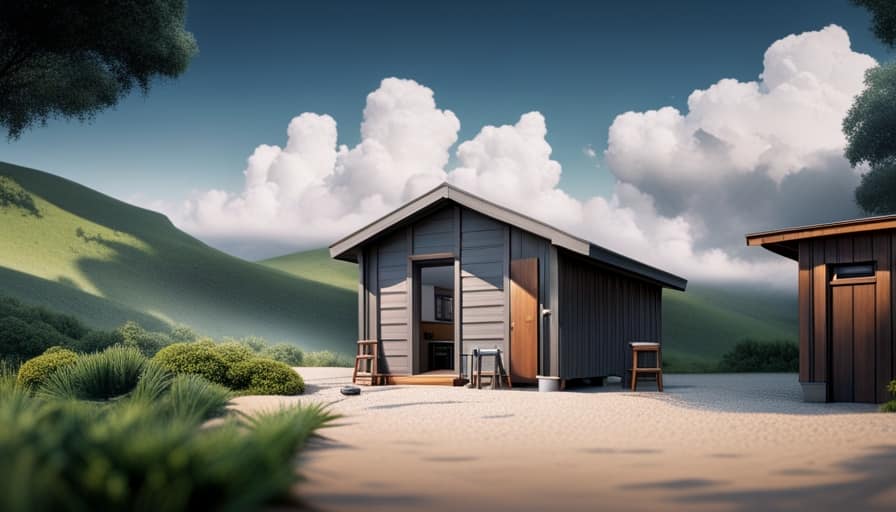
Recently, I have been bothered by these annoying little flies in my home, and I must say, they are really starting to get on my nerves!
But fear not, because I’ve done my research and I’m here to share some expert tips on how to get rid of those tiny flies once and for all.
From identifying the different types of flies to using natural remedies and chemical solutions, I’ve got you covered.
So let’s dive in and bid farewell to these unwanted guests together!
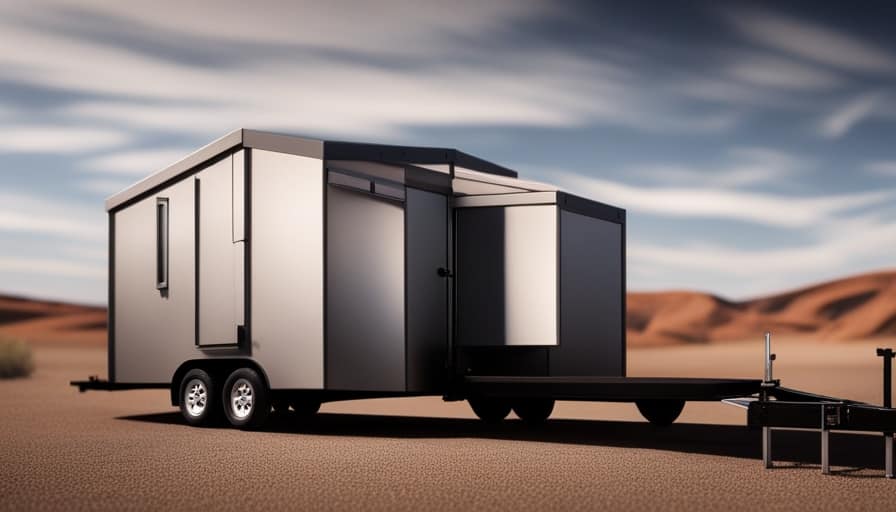
Key Takeaways
- Identifying the common types of tiny flies in your house is important for effective pest control.
- Tiny flies are attracted to moist and decaying organic matter, such as overripe fruits and rotting vegetables.
- Natural remedies, such as vinegar and dish soap solutions, can be used to eliminate tiny flies from your house.
- Preventing future infestations of tiny flies involves maintaining a clean environment, sealing cracks or openings, and storing perishable items properly.
Identifying the Common Types of Tiny Flies in Your House
I can easily identify the common types of tiny flies in my house by observing their physical characteristics and behavior. Flies are attracted to our homes for various reasons, including the presence of food, moisture, and waste. It’s important to note that these flies can pose health risks, as they can carry and spread disease-causing organisms.
To identify the types of flies, I first look at their size and color. For instance, fruit flies are small and have a tan or brown color. Drain flies, on the other hand, are gray or black and have a fuzzy appearance.
Understanding the Reasons Why Tiny Flies Infest Your Home
To understand why tiny flies infest your home, it’s important to consider their attraction to certain conditions and factors within your living space.
These flies, commonly known as fruit flies or drain flies, are attracted to moist and decaying organic matter. They seek out common breeding grounds such as overripe fruits, rotting vegetables, and damp areas in your kitchen or bathroom.
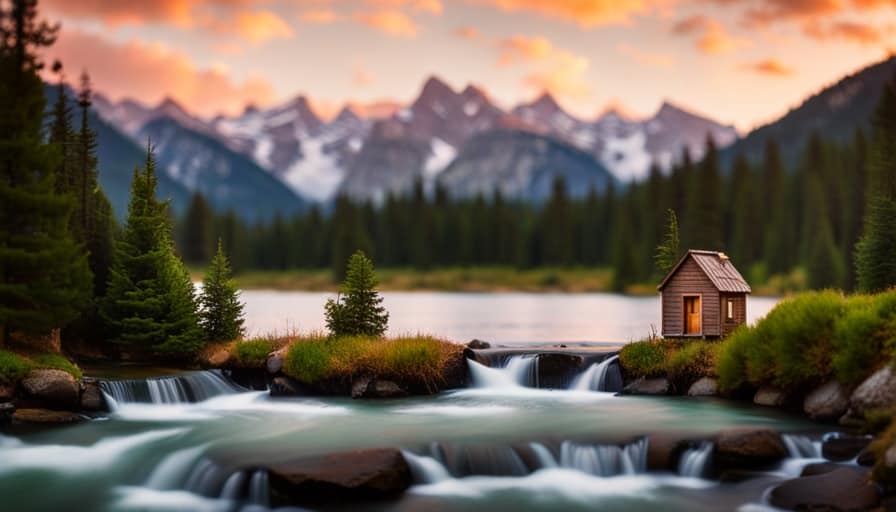
These tiny flies are also drawn to standing water in sinks, drains, and garbage disposals. Signs of a fly infestation include the presence of numerous flies hovering around these areas, as well as the sighting of their larvae or pupae.
It’s crucial to address these conditions and remove any potential breeding grounds to effectively eliminate the infestation and prevent future occurrences.
Natural Remedies to Eliminate Tiny Flies From Your House
One effective way to eliminate tiny flies from your house is by using a combination of vinegar and dish soap. This homemade vinegar fly spray is a non-toxic and practical solution to get rid of those pesky insects.
Here’s how you can make it:
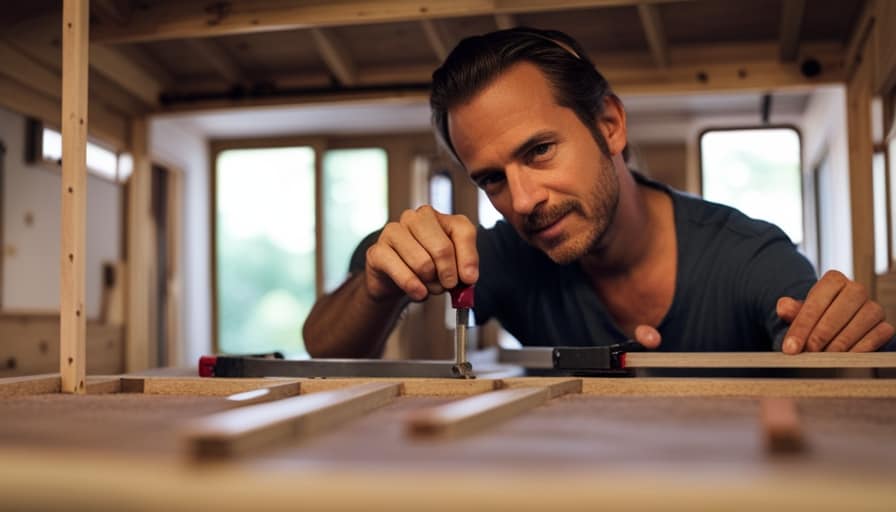
- Mix equal parts of vinegar and water in a spray bottle.
- Add a few drops of dish soap to the mixture. The soap helps to break the surface tension of the liquid, making it easier for the flies to drown.
- Shake the bottle gently to ensure the ingredients are well combined.
- Spray the solution directly onto the flies or in areas where they’re commonly found, such as near windows or fruit bowls.
This natural fly spray isn’t only effective but also safe for your family and pets. It traps and kills the flies without the use of harmful chemicals.
Give it a try and say goodbye to those tiny flies in your house!
Using Chemical Solutions to Get Rid of Tiny Flies in Your Home
Bleach is a strong and effective chemical solution that can help eliminate tiny flies in your home. Chemical solutions, such as bleach, can be highly effective in eliminating tiny flies. The strong properties of bleach make it a powerful tool for killing flies and destroying their breeding grounds. However, it’s important to use caution when using chemical solutions, as they can be harmful to humans and pets if not used properly.
When comparing chemical solutions to natural remedies for getting rid of tiny flies in your house, it’s important to consider their effectiveness.
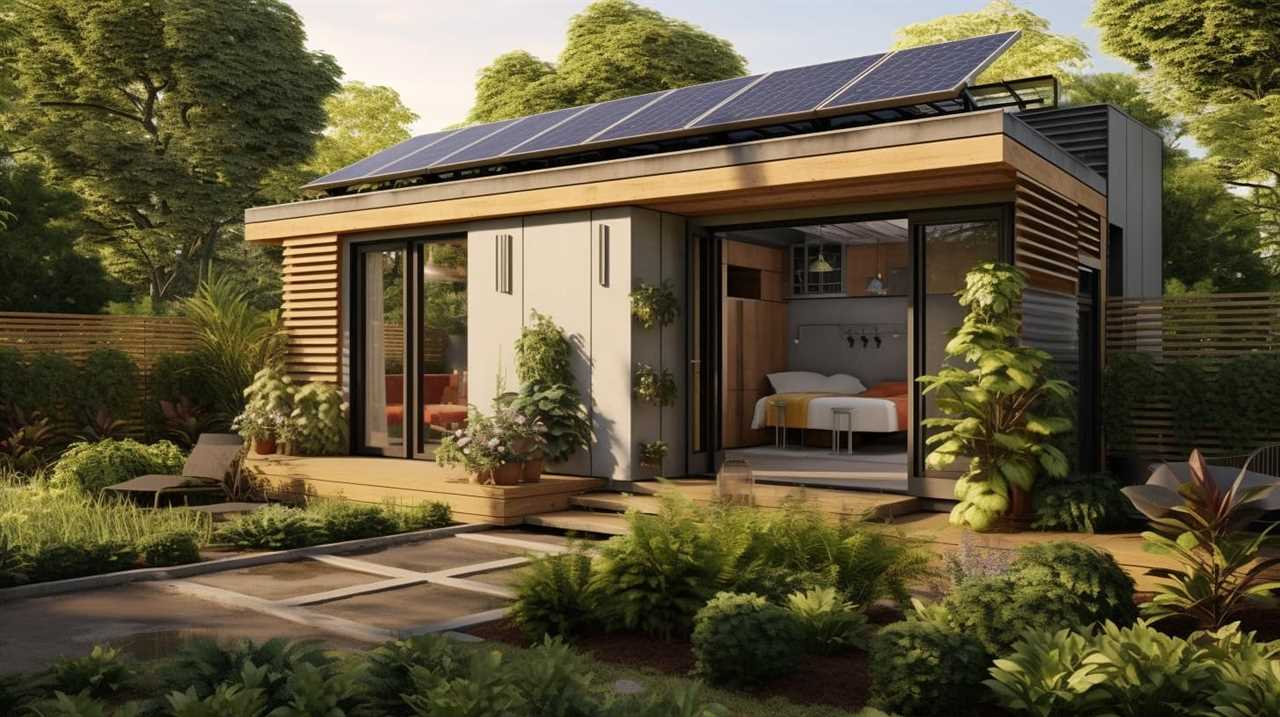
In the next section, we’ll discuss methods for preventing future infestations of tiny flies in your house.
Preventing Future Infestations of Tiny Flies in Your House
I can take steps to prevent future infestations of tiny flies in my house by implementing proper sanitation practices. By maintaining a clean environment, I can greatly reduce the chances of reinfestation. Here are three key practices to incorporate:
-
Regularly clean and sanitize all areas of the house, especially the kitchen and garbage disposal areas. Empty and clean trash cans frequently to prevent any organic matter from attracting flies.
-
Seal any cracks or openings in doors, windows, and screens to prevent flies from entering the house. Repair any damaged screens to ensure they’re intact and functioning properly.
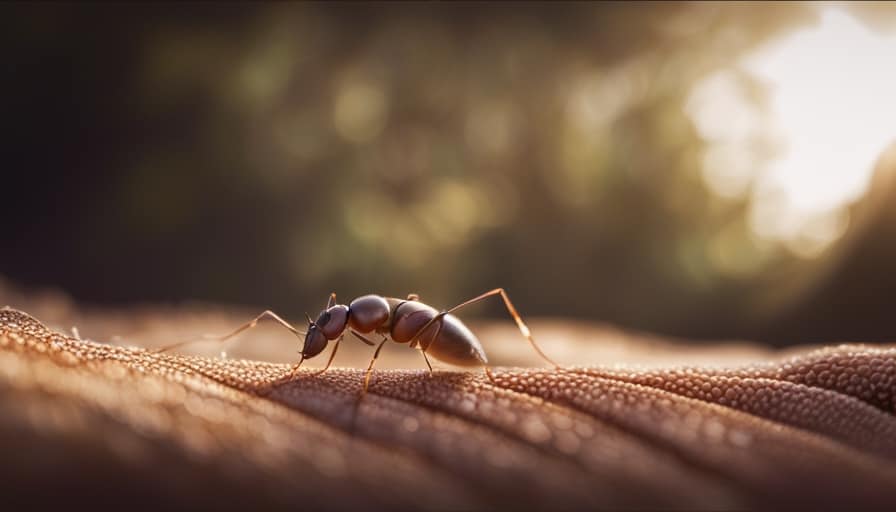
-
Store fruits, vegetables, and other perishable items in sealed containers or in the refrigerator. Flies are attracted to the odors of decaying food, so keeping it properly stored will deter them.
Frequently Asked Questions
How Do Tiny Flies Affect My Health?
Tiny flies can pose health risks, as they can carry bacteria and pathogens that can cause illnesses. To avoid health issues, it’s important to keep your house clean, dispose of trash properly, and eliminate any standing water where they can breed.
Can Tiny Flies Damage My Property?
Tiny flies can indeed cause damage to your property. Their larvae can infest and feed on organic materials, such as wood, causing structural damage over time. It’s important to address the issue promptly to prevent further harm.
Are Tiny Flies Attracted to Specific Food Sources?
Tiny flies are often attracted to specific food sources, such as overripe fruits or decaying organic matter. Understanding their breeding habits and implementing effective prevention methods, like proper sanitation and sealing entry points, can help keep them out of the house.
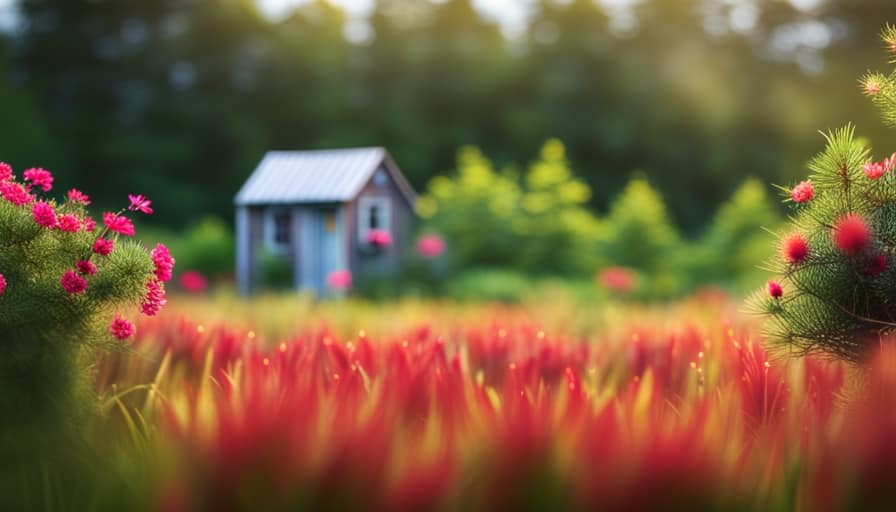
How Long Does It Take for Natural Remedies to Eliminate Tiny Flies?
In my experience, the speed of effectiveness of natural remedies versus chemical solutions for eliminating tiny flies can vary. While some natural remedies may work quickly, others may take longer to fully eliminate the flies. It’s important to be patient and consistent in your efforts.
Are There Any Long-Term Effects of Using Chemical Solutions to Get Rid of Tiny Flies?
Using chemical solutions to eliminate tiny flies in your house can have long-term environmental impacts. Consider using alternative methods like natural remedies or traps that are safer and more sustainable for the ecosystem.
Conclusion
In conclusion, it’s evident that tiny flies can be a nuisance in our homes. By understanding their types and reasons for infestation, we can effectively eliminate them using natural remedies or chemical solutions.
However, it’s crucial to prevent future infestations by maintaining cleanliness and proper waste management. Rest assured, with the right knowledge and approach, you can bid farewell to these pesky insects and enjoy a fly-free home environment.
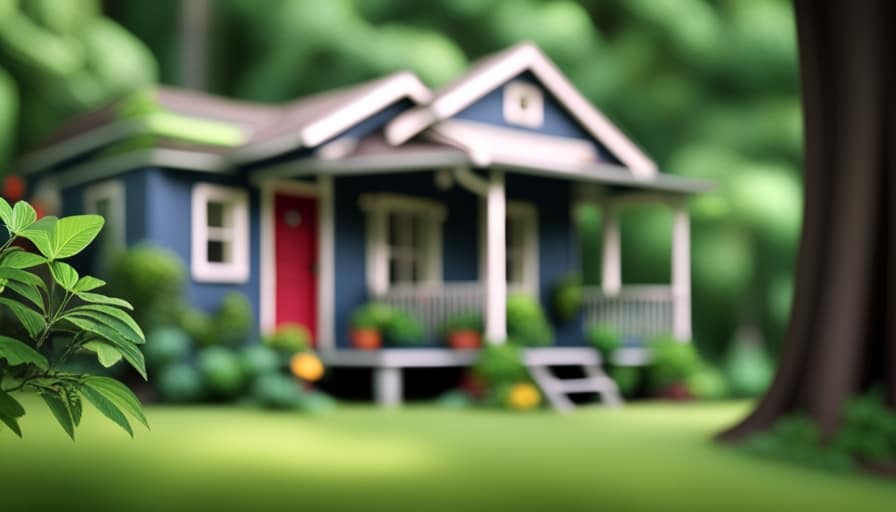
I’m Theodore, and I love tiny houses. In fact, I’m the author of Tiny House 43, a book about tiny houses that are also tree houses. I think they’re magical places where imaginations can run wild and adventures are just waiting to happen.
While tree houses are often associated with childhood, they can be the perfect adult retreat. They offer a cozy space to relax and unwind, surrounded by nature. And since they’re typically built on stilts or raised platforms, they offer stunning views that traditional homes simply can’t match.
If you’re looking for a unique and romantic getaway, a tree house tiny house might just be the perfect option.
Beginners Guides
How Do I Get Rid of Tiny Ants in My House

- Health risks: Are there any potential diseases that can be transmitted by ants in the house?
- Prevention methods: What are some effective ways to keep ants out of the house to avoid any health risks?
I have been dealing with these stubborn small ants in my home, and I’m sure you can empathize. It seems like I am stuck in an endless game of hide-and-seek with these little creatures.
But fear not, because I’ve done my research and I’m here to share some tried and true methods to get rid of them for good. From natural remedies to chemical solutions, I’ve got you covered.
So let’s roll up our sleeves and say goodbye to those pesky ants together!
Key Takeaways
- Identifying the type of ants in your house is important in order to effectively address the infestation issue.
- Understanding the behavior and nesting habits of tiny ants is essential in finding and eliminating their colonies.
- Natural remedies such as vinegar and water solution, essential oils, and cinnamon can help repel and eliminate tiny ants.
- If natural remedies don’t work, consider using chemical solutions or seeking professional pest control services for a safer and more comprehensive approach.
Identifying the Type of Ants in Your House
I personally find it helpful to identify the type of ants in my house by observing their behavior and physical features. Distinguishing characteristics play a crucial role in determining the species of ants present.
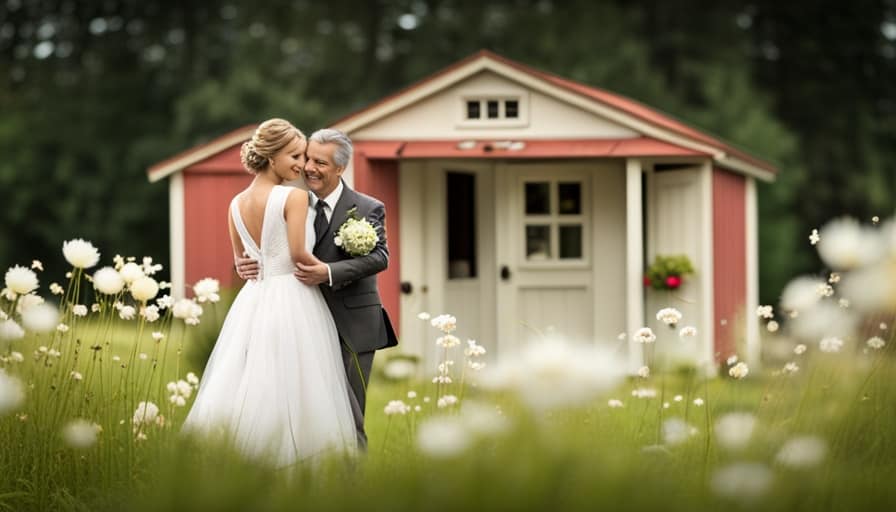
Some common types of household ants include pavement ants, odorous house ants, and pharaoh ants. Pavement ants are dark brown or black with parallel grooves on their heads and thoraxes. Odorous house ants emit a distinct odor when crushed, often described as a rotten coconut smell. Pharaoh ants are light yellow to reddish-brown and have two distinct nodes on their petioles.
In terms of common habitats, ants can be found in various areas of the house, including kitchens, bathrooms, and around food sources. Understanding the behavior and nesting habits of tiny ants is essential in effectively addressing the infestation issue.
Understanding the Behavior and Nesting Habits of Tiny Ants
There are several key factors to consider when understanding the behavior and nesting habits of tiny ants in your house.
These tiny creatures are social insects, living in colonies that can range from a few dozen to thousands of individuals. They communicate and cooperate through chemical signals and pheromones, which helps them locate food sources and establish trails.

When it comes to nesting, tiny ants can build their colonies in various locations, such as in wall voids, under floors, or even in potted plants. Understanding their nesting habits is crucial in effectively eliminating them from your house.
It’s important to note that while ants can be a nuisance indoors, they play a vital role in the ecosystem, helping to decompose organic matter and control other insect populations. However, their presence in food storage areas can contaminate and spoil food, making it necessary to address their infestation promptly and safely.
Natural Remedies to Get Rid of Tiny Ants in Your House
One effective natural remedy to eliminate tiny ants in your house is using a vinegar and water solution. Vinegar, with its strong odor, disrupts their scent trails and confuses them, making it difficult for them to navigate. To create the solution, mix equal parts of white vinegar and water in a spray bottle. Then, simply spray the solution directly onto the ants or their entry points.
Another natural remedy is using essential oils, such as peppermint, lemon, or tea tree oil. These oils have strong scents that repel ants. Mix a few drops of your chosen essential oil with water and spray it in areas where ants are present.
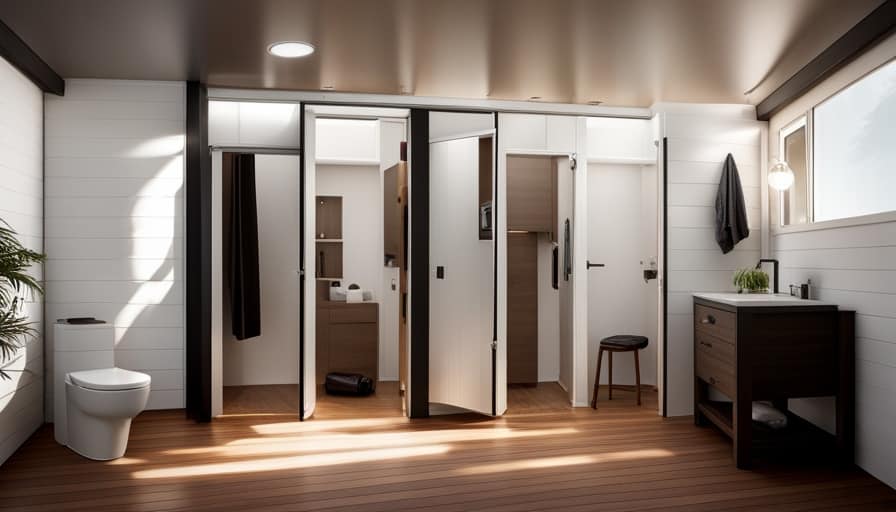
These natural remedies provide an eco-friendly and safe way to get rid of tiny ants in your house. However, if these methods don’t work, it may be necessary to consider chemical solutions for eliminating tiny ants.
Chemical Solutions for Eliminating Tiny Ants
If you’re dealing with a persistent infestation of tiny ants in your house, using insecticide sprays can be an effective solution to eliminate them. However, it is important to consider non-toxic alternatives and professional pest control services for a safer and more comprehensive approach.
| Chemical Solution | How it Works | Pros | Cons |
|---|---|---|---|
| Insecticide sprays | Kills ants on contact | – Easy to use – Widely available – Immediate results |
– Chemical exposure – Harmful to pets and children – Potential environmental impact |
While insecticide sprays can quickly kill ants, they may pose risks to your health and the environment. If you prefer non-toxic alternatives, consider using natural repellents like vinegar, lemon juice, or essential oils. These substances are less harmful and can help deter ants from entering your home.
Another option is to hire professional pest control services. They have the expertise and specialized equipment to effectively eliminate ant infestations. Professionals can also assess the extent of the problem and provide long-term solutions to prevent future infestations.
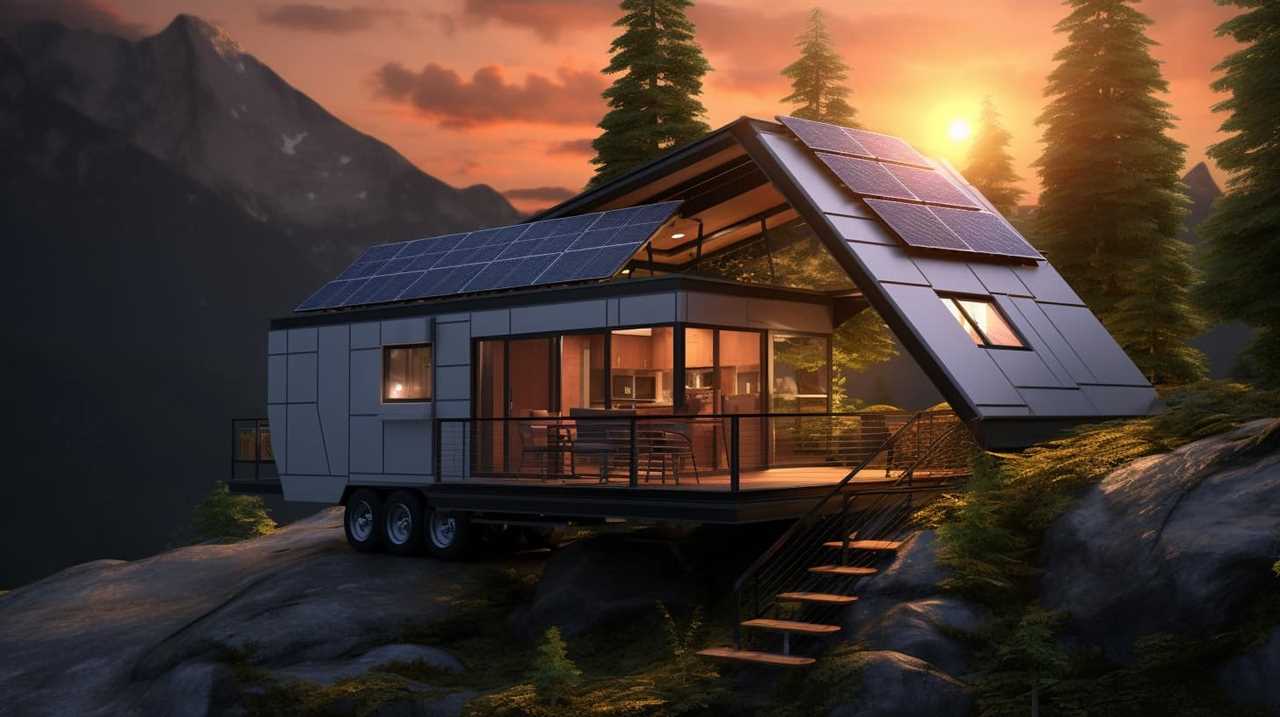
Preventing Future Infestations: Tips and Tricks
When I encountered a persistent infestation of tiny ants in my house, I took proactive steps to prevent future infestations. Here are some effective ant proofing techniques for your home and long-term strategies for keeping ants out:
-
Seal cracks and crevices: Inspect your house for any openings where ants can enter, such as gaps around doors, windows, and pipes. Use caulk or weatherstripping to seal these entry points.
-
Keep your house clean: Clean up food and drink spills promptly, and store food in airtight containers. Wipe down countertops and sweep floors regularly to remove any crumbs or residue that may attract ants.
-
Remove potential ant habitats: Trim back vegetation that’s in contact with your house, as ants can use it as a bridge to enter. Also, keep firewood and other outdoor items away from the foundation.
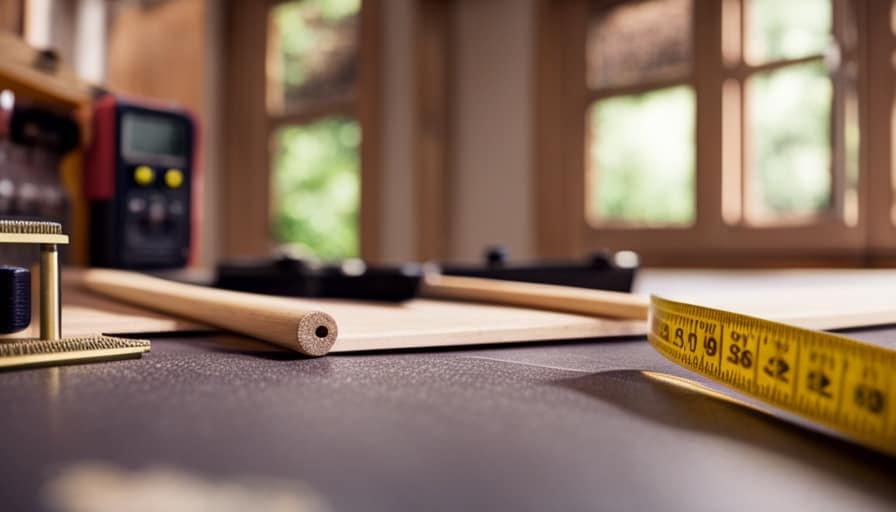
-
Use natural deterrents: Certain scents like peppermint, cinnamon, and vinegar can repel ants. Spray these substances around entry points or wipe down surfaces to discourage ants from entering.
Frequently Asked Questions
How Do I Get Rid of Ants in My Garden?
To get rid of ants in my garden, I use organic pest control methods and natural ant repellents. These methods are effective in keeping ants away and maintaining a healthy garden environment.
Can I Use Vinegar to Kill Ants?
Yes, vinegar can be used to kill ants. However, there are also other natural ant repellents that you can consider using as alternatives to vinegar.
What Should I Do if I Have a Severe Ant Infestation?
If I have a severe ant infestation, I would first focus on prevention tips such as sealing entry points and removing food sources. If the problem persists, I would consider professional ant extermination options for effective and long-lasting results.

Are There Any Health Risks Associated With Ants in the House?
There are potential health risks associated with ants in the house. They can contaminate food, spread bacteria, and even cause allergies. It’s important to take preventive measures to avoid these risks.
Can I Use Essential Oils to Repel Ants?
I find that using essential oils for ant control can be effective. However, it’s important to consider the pros and cons of natural ant repellents. While they are safe and eco-friendly, they may not be as potent as chemical options.
Conclusion
In conclusion, by identifying the type of ants in your house, understanding their behaviors and nesting habits, and implementing natural or chemical remedies, you can effectively get rid of tiny ants.
However, prevention is key to avoiding future infestations. Just as a fortress protects its kingdom from invaders, taking proactive measures will safeguard your home from these pesky pests.
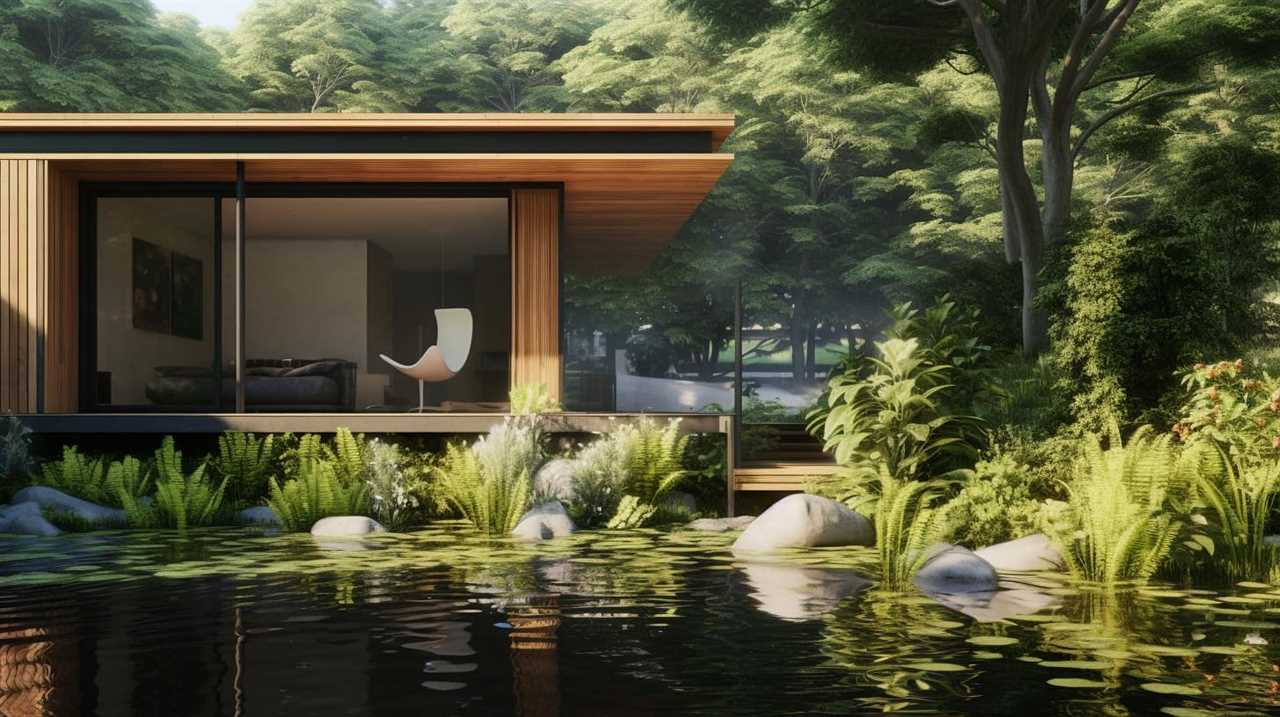
Stay vigilant and maintain cleanliness to ensure a ant-free environment.
I’m Theodore, and I love tiny houses. In fact, I’m the author of Tiny House 43, a book about tiny houses that are also tree houses. I think they’re magical places where imaginations can run wild and adventures are just waiting to happen.
While tree houses are often associated with childhood, they can be the perfect adult retreat. They offer a cozy space to relax and unwind, surrounded by nature. And since they’re typically built on stilts or raised platforms, they offer stunning views that traditional homes simply can’t match.
If you’re looking for a unique and romantic getaway, a tree house tiny house might just be the perfect option.
Beginners Guides
How Cheap Can You Build a Tiny House

Constructing a small house is akin to figuring out a puzzle – it can be difficult, but the payoff is valuable. As someone who enjoys discovering inventive answers, I sympathize with the longing to create a gorgeous home without breaking the bank.
In this article, we’ll explore the factors that affect the cost of building a tiny house and discover budget-friendly materials and labor-saving strategies. Join me on this journey to uncover just how cheap you can build your dream tiny house.
Key Takeaways
- Choosing the right location in a rural area with lower land prices and fewer building restrictions can significantly affect the cost of building a tiny house.
- Using alternative building methods such as reclaimed materials or repurposed items can help reduce costs.
- Implementing cost-saving techniques and building on a budget are important factors in building a cheap tiny house.
- Utilizing budget-friendly building materials, such as affordable insulation options and low-cost flooring alternatives, can also contribute to building a cheap tiny house.
Factors Affecting the Cost of Building a Tiny House
What are the factors that affect the cost of building a tiny house?
When it comes to building a tiny house on a budget, there are several cost-saving techniques and alternative building methods that can significantly impact the overall cost.

One of the main cost-saving techniques is choosing the right location. Building in a rural area with lower land prices and fewer building restrictions can help keep costs down.
Another factor that affects the cost is the size and design of the tiny house. The simpler the design, the more cost-effective it will be.
Additionally, using alternative building methods such as reclaimed materials or repurposed items can also help reduce costs.
By considering these factors and implementing cost-saving techniques, it’s possible to build a tiny house on a budget.
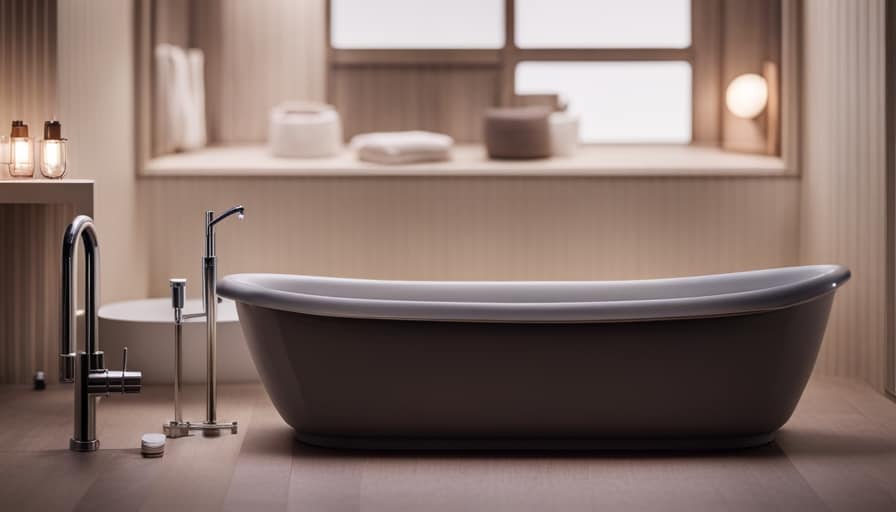
Transitioning into the subsequent section about budget-friendly tiny house building materials, let’s explore how the choice of materials can further impact the overall cost.
Budget-Friendly Tiny House Building Materials
When it comes to building a tiny house on a budget, I can find affordable building materials that will help keep costs down. One area where I can save money is by choosing affordable insulation options. Instead of expensive spray foam insulation, I can opt for alternatives such as fiberglass batts or rigid foam boards. These options are cost-effective and still provide good insulation for the tiny house. Additionally, I can consider low-cost flooring alternatives to save money. Instead of hardwood or tile, I can use vinyl plank flooring or laminate flooring, which are both affordable and durable. By making smart choices when it comes to insulation and flooring, I can build a budget-friendly tiny house without compromising on quality.
| Affordable Insulation Options | Low Cost Flooring Alternatives |
|---|---|
| Fiberglass batts | Vinyl plank flooring |
| Rigid foam boards | Laminate flooring |
Strategies for Saving Money on Tiny House Design
To save money on my tiny house design, I can employ cost-saving strategies such as utilizing multipurpose furniture and maximizing storage space. By incorporating cost-effective design options and implementing DIY tiny house building techniques, I can create a functional and affordable living space.
One key strategy is to choose furniture that serves multiple purposes, such as a sofa that can be converted into a bed or a dining table that can be folded away when not in use. This not only saves money on buying separate pieces of furniture but also maximizes the use of limited space.
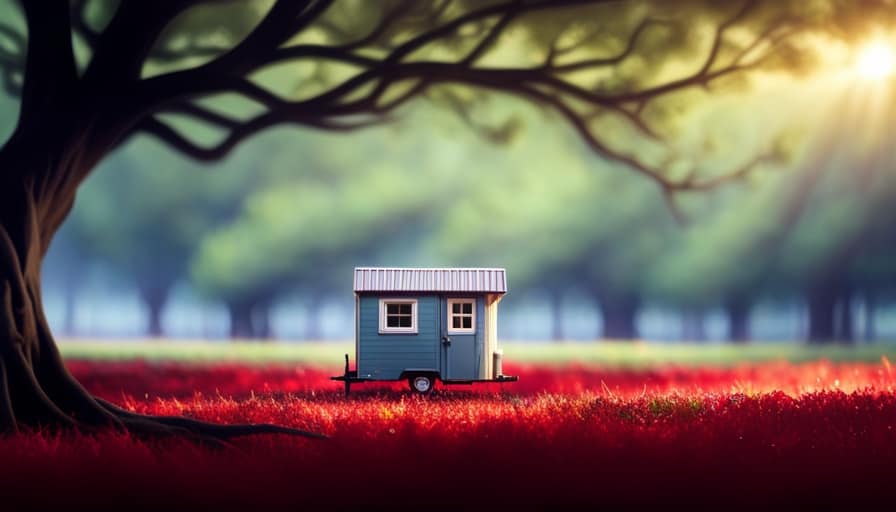
Another cost-saving strategy is to maximize storage space by utilizing built-in shelving, under-bed storage, and wall-mounted organizers. This eliminates the need for additional storage furniture and keeps the space clutter-free.
Creative Ways to Reduce Labor Costs in Tiny House Construction
I can significantly reduce labor costs in tiny house construction by hiring a small team of skilled workers instead of a large crew. This approach allows for effective coordination and streamlined communication, resulting in increased efficiency and reduced labor hours.
Here are some creative ways to further reduce labor costs in tiny house construction:
-
Utilize DIY construction techniques: Encourage the use of DIY construction techniques, where homeowners can actively participate in the building process. This not only reduces labor costs but also creates a sense of ownership and satisfaction.
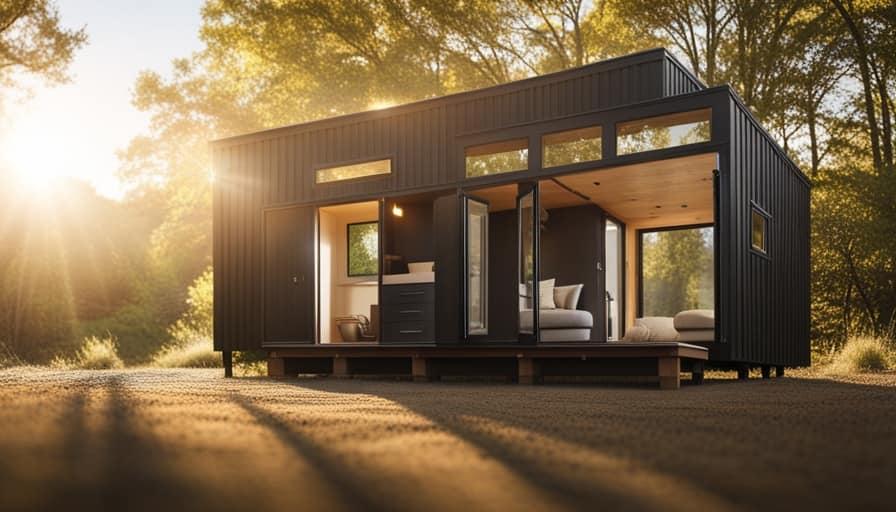
-
Incorporate alternative energy sources: Explore the use of alternative energy sources such as solar panels or wind turbines. By integrating these systems during the construction phase, you can avoid additional labor costs associated with retrofitting.
-
Optimize material usage: Carefully plan and optimize the use of materials to minimize waste. This can be achieved by accurately measuring and cutting materials, as well as repurposing leftover materials for other parts of the project.
-
Prioritize efficient design: Focus on designing a space that maximizes functionality and minimizes unnecessary labor-intensive features. This includes thoughtful space planning, utilizing multipurpose furniture, and incorporating efficient storage solutions.
Implementing these strategies won’t only help reduce labor costs but also contribute to a sustainable and budget-friendly tiny house construction process.
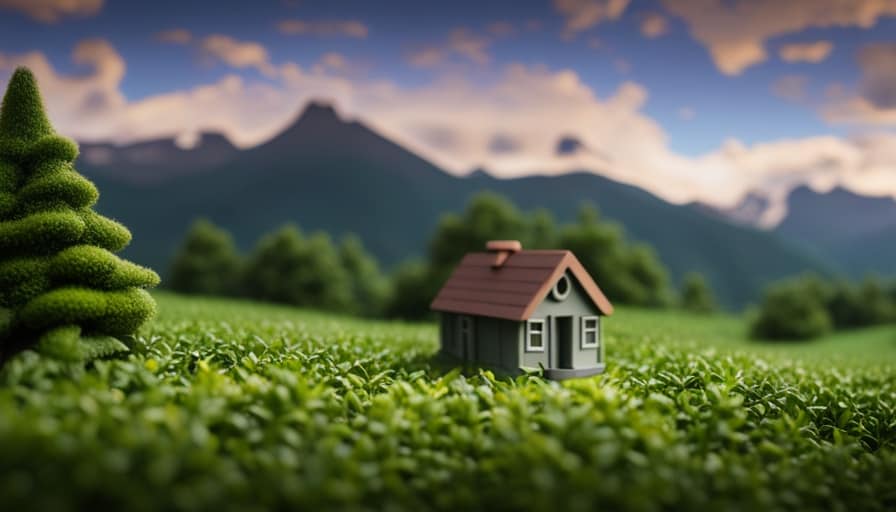
Tips for Finding Affordable Land for Your Tiny House
By researching online listings and networking with local real estate agents, I can easily find affordable land for my tiny house. It is important to explore alternative financing options for purchasing land for a tiny house to keep costs low. One option is owner financing, where the seller acts as the lender and allows you to make monthly payments instead of obtaining a traditional mortgage. Another option is crowdfunding, where you can raise funds from a community of supporters who believe in your tiny house project. Additionally, negotiating with local municipalities for reduced fees and regulations for tiny house living can save you money in the long run. Some municipalities may be open to creating special zoning or permitting regulations for tiny houses, making it easier and more affordable to live in them.
| Financing Options | Benefits |
|---|---|
| Owner Financing | Lower interest rates, flexible payment terms |
| Crowdfunding | Community support, no need for traditional loans |
| Negotiating with Local Municipalities | Reduced fees, simplified regulations |
Finding affordable land for your tiny house is a crucial step in building your dream home while staying within your budget. With the right research, networking, and negotiation skills, you can make your tiny house dreams a reality.
Frequently Asked Questions
What Are the Most Common Mistakes to Avoid When Building a Tiny House on a Tight Budget?
Common pitfalls to avoid when building a tiny house on a tight budget include overestimating DIY skills, not researching local codes and regulations, and not budgeting for unexpected expenses. Cost saving tips include using reclaimed materials and prioritizing essential features.
Are There Any Financing Options Available for Building a Tiny House?
Financing options for building a tiny house include personal loans, RV loans, and construction loans. Pros include flexibility, ownership, and the opportunity to live mortgage-free. Cons may include higher interest rates and stricter qualification requirements.
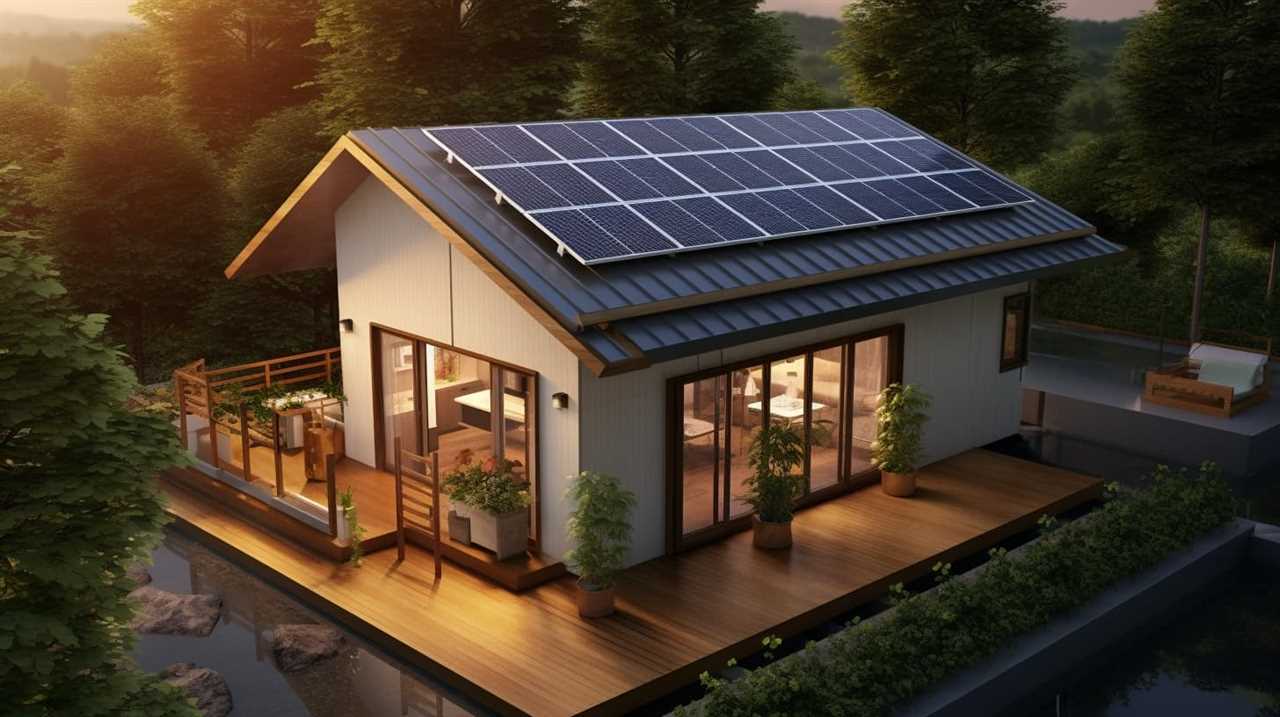
How Much Does It Cost to Maintain a Tiny House on a Yearly Basis?
Maintaining a tiny house on a yearly basis can be cost-effective. By embracing the benefits of living in a tiny house vs. a traditional home and following tips for minimizing maintenance costs, I can save money and enjoy a simpler lifestyle.
Can You Build a Tiny House Using Recycled or Salvaged Materials?
Using recycled and salvaged materials for a tiny house not only saves money, but also gives a sense of purpose and accomplishment. It’s a creative way to build sustainably and reduce waste while creating a unique and personalized home.
Are There Any Legal Restrictions or Regulations to Consider When Finding Land for a Tiny House?
When finding land for a tiny house, it’s important to consider legal restrictions and zoning regulations. Land requirements vary, and financing options may be limited. Maintenance costs can be lower, and eco-friendly building materials are often used.
Conclusion
In conclusion, building a tiny house can be an affordable and cost-effective option for those looking to downsize or live a more minimalist lifestyle. By considering factors such as materials, design strategies, and labor costs, it’s possible to build a tiny house on a tight budget.
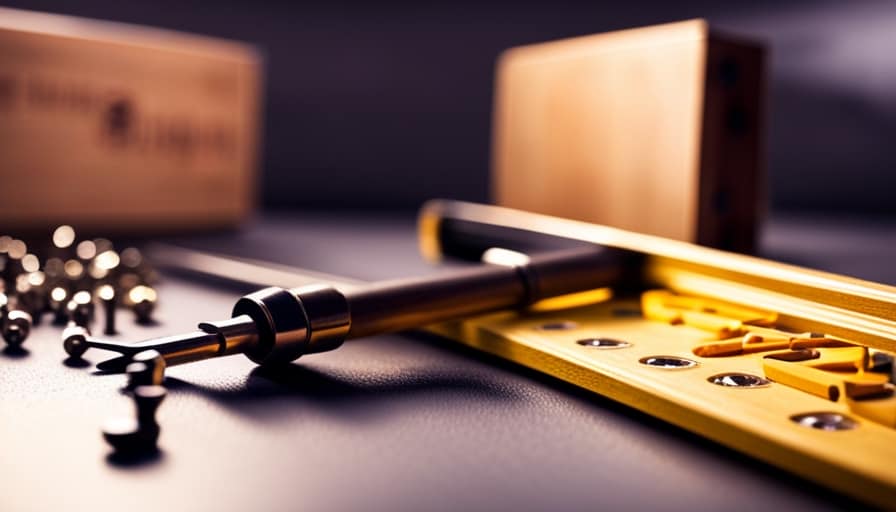
With a little creativity and resourcefulness, you can achieve your dream of owning a tiny house without breaking the bank. So why wait? Start planning and building your own tiny house today!
I’m Theodore, and I love tiny houses. In fact, I’m the author of Tiny House 43, a book about tiny houses that are also tree houses. I think they’re magical places where imaginations can run wild and adventures are just waiting to happen.
While tree houses are often associated with childhood, they can be the perfect adult retreat. They offer a cozy space to relax and unwind, surrounded by nature. And since they’re typically built on stilts or raised platforms, they offer stunning views that traditional homes simply can’t match.
If you’re looking for a unique and romantic getaway, a tree house tiny house might just be the perfect option.
-

 Beginners Guides2 weeks ago
Beginners Guides2 weeks agoHow To Buy A Tesla Tiny House
-

 Energy Efficiency2 months ago
Energy Efficiency2 months agoBest Tiny Homes For Cold Climates
-

 Beginners Guides2 weeks ago
Beginners Guides2 weeks agoTiny House Nation Where Are They Now Stephanie
-

 Tiny House Resources (e.g., legalities, cost, insurance, FAQs)2 months ago
Tiny House Resources (e.g., legalities, cost, insurance, FAQs)2 months agoDo Tiny Homes Need Planning Permission?
-

 Beginners Guides3 weeks ago
Beginners Guides3 weeks agoFrom The Show Tiny House Nation How Many Keep Their Tiny House?
-

 Beginners Guides2 months ago
Beginners Guides2 months agoUsing a Climbing Net For Treehouse Construction
-

 Beginners Guides2 months ago
Beginners Guides2 months agoHow to Build a Treehouse Without Drilling Into the Tree
-

 Beginners Guides3 weeks ago
Beginners Guides3 weeks agoTiny House Nation Who Pays For The Houses





